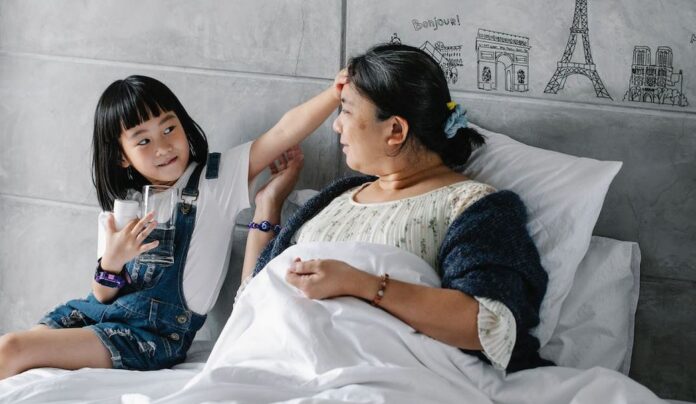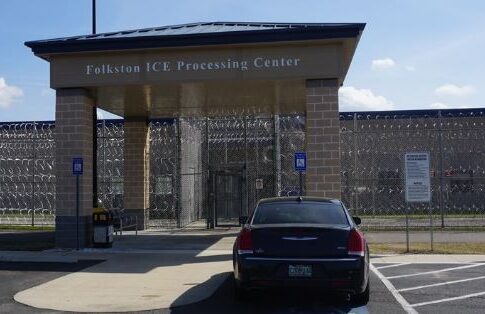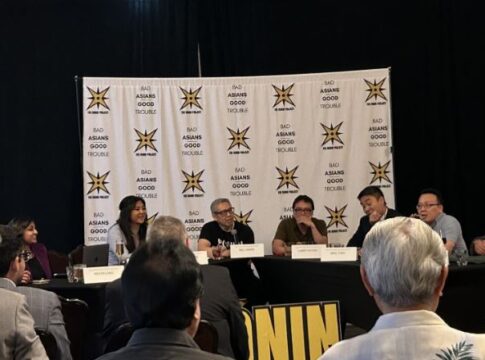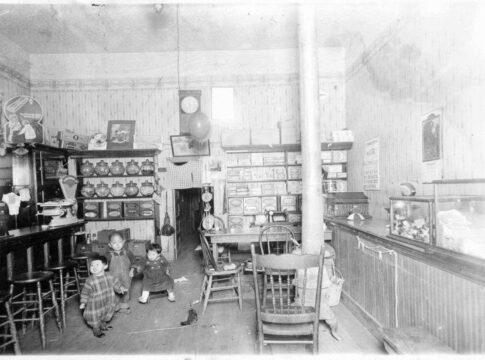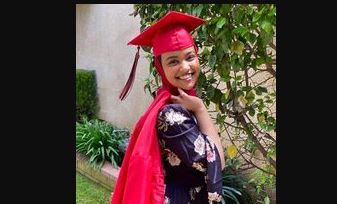By Selen Ozturk, Ethnic Media Services
Kalani Tukuafu, Pasifika arts director of Pacific Island Knowledge 2 Action Resources (PIK2AR), said a recent survey from her Utah-based cultural nonprofit found “50% of survey participants have been caregiving for over five years, with 67% of the pool having no formal training, and only 26% surveyed have the support that they need.”
This discrepancy signals the fact that supportive caregiving requires supporting caregivers themselves, she said.
Much of the need for this support, added PIK2AR board member Carolynn Williams, is created by the xenophobia that many Pacific Islanders in her community face. To counter this, the nonprofit has been conducting interviews with caregiving community members for a portrait series that will be displayed throughout social media and an in-person art exhibit.
LATEST STORIES
Kalani Tonga-Tukuafu — Director of Pasifika Enriching Arts of Utah (PEAU), the Arts and Culture Division of PIK2AR — shares details of her organization’s ongoing community project, which uplifts the stories and experience of Pacific Islander caregivers.
Through this process, Tukuafu added, PIK2AR will also mentor Pacific Islander artists to share their own experiences with caregiving, and to “give the general public a deeper, more nuanced understanding of what it means to be and care for a Pacific Islander living in the diaspora.”
Caregivers see “community as value”
Neeta Patel, Interim Executive Director of Asian Americans United said because strong caregiving depends upon supporting caregivers, the most valuable care happens at the collective level.
Her Philadelphia-based organization is currently focused upon preserving and caring for the elderly members of her community’s Chinatown against “corrupt government officials serving the interests of the super-wealthy.”
“Three billionaire real estate developers announced plans to build an arena in our backyard, 150-year-old cultural treasure — one of the oldest historical Chinatowns in the country,” Patel explained. “We’ve built an intergenerational coalition to show how small, low-income, non-English-speaking community members can band together … to defend our culture and push back on the displacing, for-profit model impacting communities all over the country and the world. Our community’s very existence is at stake. It’s survived for 150 years because we have fought for it.”
“This is about the commodification of our lives by a development model that puts profits over people — that extracts value, but doesn’t see community as value,” she added. “That is the narrative we are trying to change. It’s our place of living, thriving, worshiping, coming together, and we are fighting for its existence, by telling our stories … we give it life, we create memories, we create a value that is beyond money.”
Changing the narrative of caregiving
Benny Lai, Executive Manager of Communications and Events at the Seattle-based National Asian Pacific Center on Aging (NAPCA), said crucial to a more holistic understanding of how to best provide care to community members — particularly seniors, whose voices often go unheard — is letting them voice their own care experiences and needs.
Toward this narrative change, he said NAPCA has been working with Risa Morimoto — a film and TV director and producer, and an expert on aging — to shoot 15-minute episodes featuring AAPI caregiver families across the country.
One of the biggest takeaways of this project is the “time-consuming attention to sacrifice … We see — love for parents, of course, but there is also a lot of frustration to being a major caregiver. Sometimes they have mobility issues, mood swings, they may throw tantrums. It’s not an easy job. If any of us decide to be a caregiver, we need to be prepared” by telling ground-level stories about what it means to give and receive care, said Lai.
Making an empowering space for care
Dianara Rivera, Director of Narrative Strategy at the Boston-based Asian American Resource Workshop (AARW) , said “particularly in this time of political attacks” on AAPI community members, “it’s imperative that we create healing spaces for care that also builds power.”
“Collective care is inherently political” when the communities receiving it are marginalized, she added. Toward this end, AARW has been conducting workshops for AAPI community leaders, members and artists “to collect the stories of how we care for each other.”
Many of these stories “have to do with not asking for help,” Rivera said. “We see how those narratives are political and connected to collective care when we ask what the barriers are to us asking for help, how those barriers relate to how we grew up, and what the antidotes are to those barriers when we feel a fear of rejection. In a lot of Asian immigrant families, you feel you can’t talk about these problems,” and empowering those who receive care “requires shifting away from transactional expectations.”
Preserving stories as a form of care
Jessica Eckerstorfer, Co-Executive Director of The Southeast Asian Diaspora (SEAD) Project, said a recent collection of stories released by the Minneapolis-based organization — “Knowing Our Joy” — focuses on “stories of joy with our elders, as collecting and preserving their stories allows us caring for them to connect to our homelands, preserve our traditions, learn from our past and keep the voices of our people alive for generations to come.”
Jessica Eckerstorfer, Co-Executive Director of The SEAD (Southeast Asian Diaspora) Project, describes a story-collection project that paired Asian elders with young people to chronicle stories from the elders’ lives before they came to the United States.
For the project, 17 young adult storytellers and 20 illustrators “brought their elders to story collection dinners and workshops,” she said. Building trust through intergenerational collaboration was crucial, “as many elders weren’t comfortable in these spaces — they may not have the experience or language for story collection or the publication process.”
Through this story-collecting process, Eckerstorfer continued, many participants noted that elders were opening up about things that they had never heard of before, joyful aspects of their childhood” beyond, for example, wartime trauma in the case of Vietnamese elders.
To do storytelling is “to think and feel through the different memories” of those whose stories you preserve, she said. Despite the fact that “Healing spaces beyond medical professionalism are very rare,” it’s crucial for caregivers to witness what creates “moments of joy and happiness” in those they care for.
(This story is published as part of AsAmNews’ partnership with Ethnic Media Services)
AsAmNews is published by the non-profit, Asian American Media Inc. Follow us on Facebook, X, Instagram, TikTok and YouTube. Please consider making a tax-deductible donation to support our efforts to produce diverse content about the AAPI communities. We are supported in part by funding provided by the State of California, administered by the California State Library in partnership with the California Department of Social Services and the California Commission on Asian and Pacific Islander American Affairs as part of the Stop the Hate program. To report a hate incident or hate crime and get support, go to CA vs Hate.

